Last weekend I attended a fundraiser film that, rather shockingly, released hundreds of monarch butterflies into the theatre. There were orange-and-black monarchs flying at me, through me and fluttering all around me. Little kids in the audience stood up, their arms upraised to grab the beautiful butterflies. 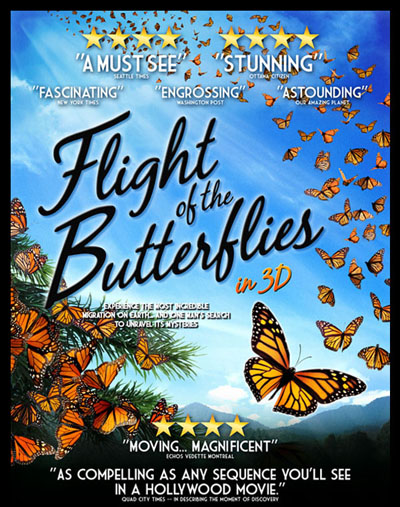
But if we took our 3D glasses off, the butterflies behaved themselves and stayed inside the IMAX screen, where they were starring in a wonderful film called Flight of the Butterflies 3D. Written and produced by SK Films and its principals Jonathan Barker and Wendy MacKeigan, it’s an engrossing, award-winning story filmed in Canada and Mexico.
I received my ticket in exchange for a modest donation to the David Suzuki Foundation’s Got Milkweed project, which is in turn part of their Homegrown National Park project. The idea is to crowd-source the planting of native milkweed seeds and plants to make a milkweed corridor through Toronto. Monarchs, as we know, lay their eggs on all 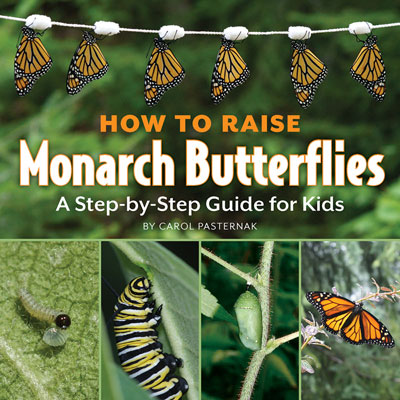 species of milkweed (Asclepias spp), where the eggs develop into caterpillars, then chrysalids, then the iconic black and orange butterfly that’s become the poster insect for sustainability and our own relationship with nature. It’s also the topic of a book written by my Facebook friend and monarch butterfly specialist Carol Pasternak.
species of milkweed (Asclepias spp), where the eggs develop into caterpillars, then chrysalids, then the iconic black and orange butterfly that’s become the poster insect for sustainability and our own relationship with nature. It’s also the topic of a book written by my Facebook friend and monarch butterfly specialist Carol Pasternak.
By increasing the amount of milkweed available, it’s hoped that there will be abundant larval habitat for the monarchs that use the city as the departure point for their long flight over Lake Ontario and points south to the overwintering grounds in Mexico. There they roost by the tens of millions in the Oyamel firs of the cool, fog-shrouded Transvolcanic Mountains outside Mexico City – now the UNESCO-designated Monarch Butterfly Biosphere Preserve. (Populations west of the Rockies have other overwintering sites, including one at Pacific Grove in Monterey, California.) The project will enlist the help of residents, children and “homegrown park rangers”, who will supervise community planting projects to foster mass populations of common milkweed (Asclepias syriaca).
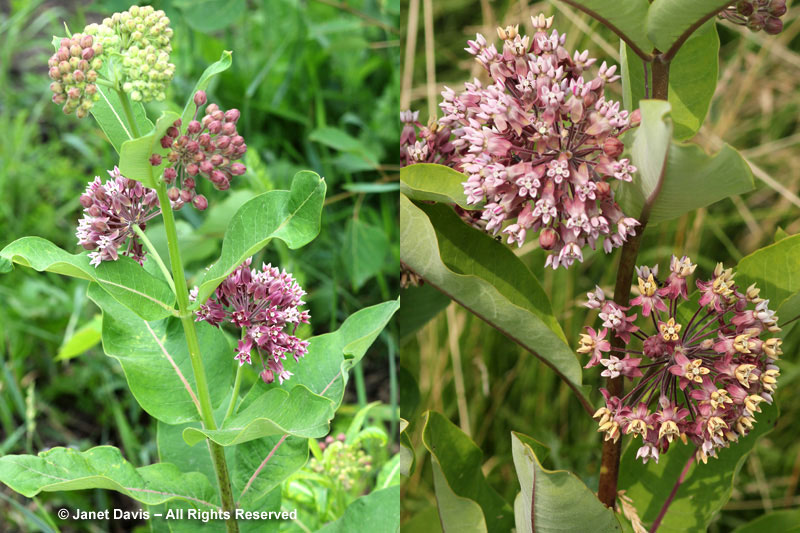
The common milkweed that grows by the highway or in old fields is a gorgeous thing, with nectar-rich flowers held in umbellate cymes. When bees nectar, however, milkweed pollinia often become detached and hang like golden chains from the bee’s feet, sometimes trapping them on the flower.
We all know by now that the monarch butterfly (Danaus plexippus) is in trouble. They have only been studied in situ for 40 years, so it is possible that this is a temporary blip in their evolutionary history, but their population numbers in Mexico are down drastically this winter, much more than the severe decline of the previous winter. There are many possible reasons. Summer 2012 featured a historic drought that devastated crops and native plants in the American Midwest. I lost some of my own orange butterfly milkweed plants at the cottage that summer, along with the eggs and larva that were on them.
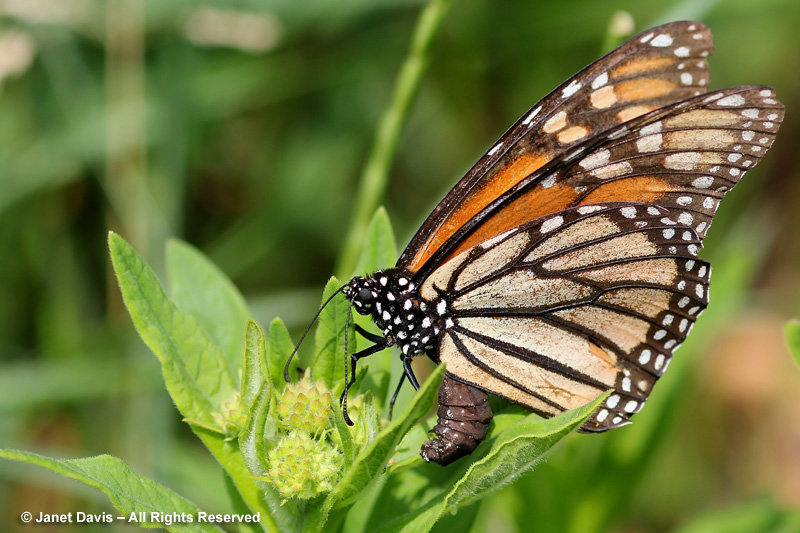
The female monarch laying a tiny egg (ovipositing) on butterfly milkweed leaves.
My plants were simply too far away to water, so imagine what happened to the milkweeds on the highway edges and in the fields of Illinois, Kansas and Nebraska – those that aren’t now planted with corn and soybeans, at any rate. Second, the spring of 2013 was wet and cool, with poor flying conditions for monarchs migrating north through the Texas hill country for their first mating, before the next generation flies up into the Midwest and southern Canada. Then there were rare, but devastating, freezes in the Mexican wintering grounds. Combine weather factors with the loss of vast tracts of wildflower and milkweed habitat to farming and the widespread planting of Roundup-ready crops (with milkweed being one of the intended target ‘weeds’) and you have a perfect storm of adversity.
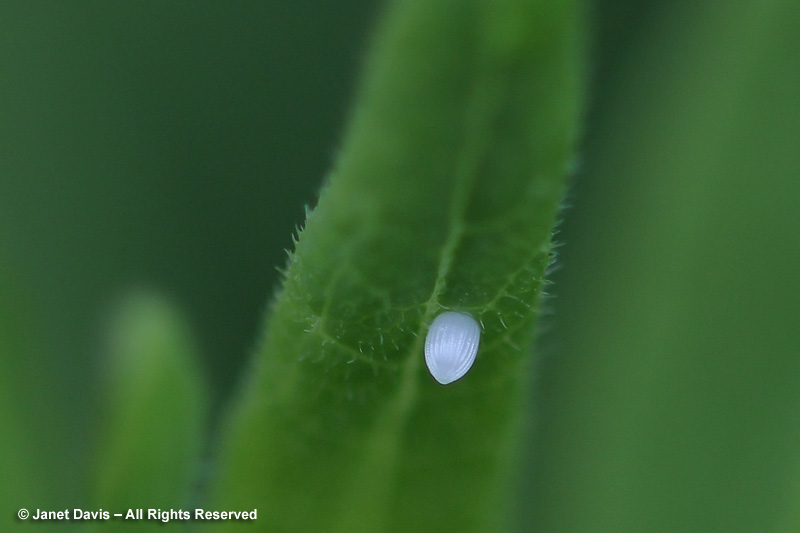
A tiny monarch egg on a butterfly milkweed leaf. After mating, the female monarch can lay up to hundreds of eggs. Where milkweed is plentiful, she will lay one egg per plant to ensure lots of food; where not, several eggs might be laid on a single plant. The egg will hatch in 4 days, producing the first, small, worm-like caterpillar.
Flight of the Butterflies chronicles the monarch migration, beginning with a single Toronto butterfly called Dana (after her Latin name), through her daughter (third generation), granddaughter (the fourth generation – the super butterfly that makes the arduous flight to Mexico, overwinters there, then flies up to Texas to mate) and her great-granddaughter (first generation, which flies back to Toronto and other points north in early summer).
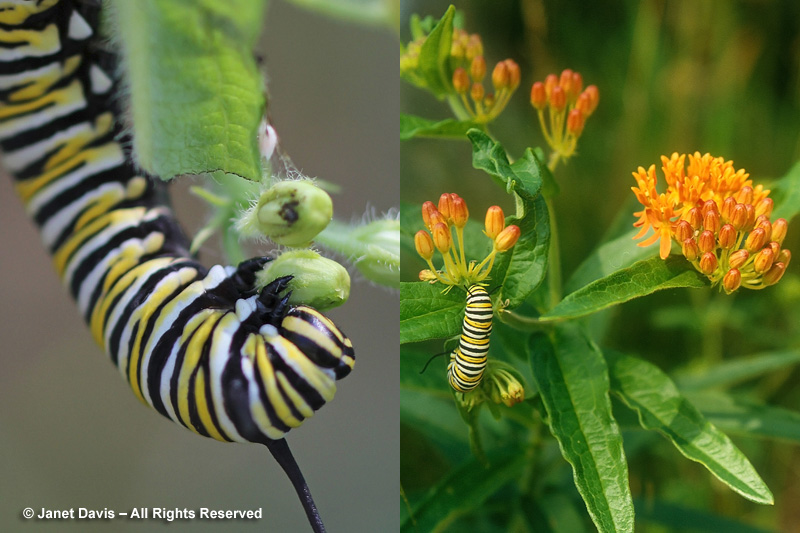
The monarch caterpillar is an eating machine, going through several larval stages or ‘instars’ while consuming milkweed leaves and even flowers.
But the film recounts a second, parallel story: that of the late University of Toronto professor Dr. Fred Urquhart and his wife Norah, who spent their entire professional life uncovering the mystery of the monarch migration. Even as a child, Dr. Urquhart had known that they flew by the millions south over Lake Ontario in late summer – where were they going?
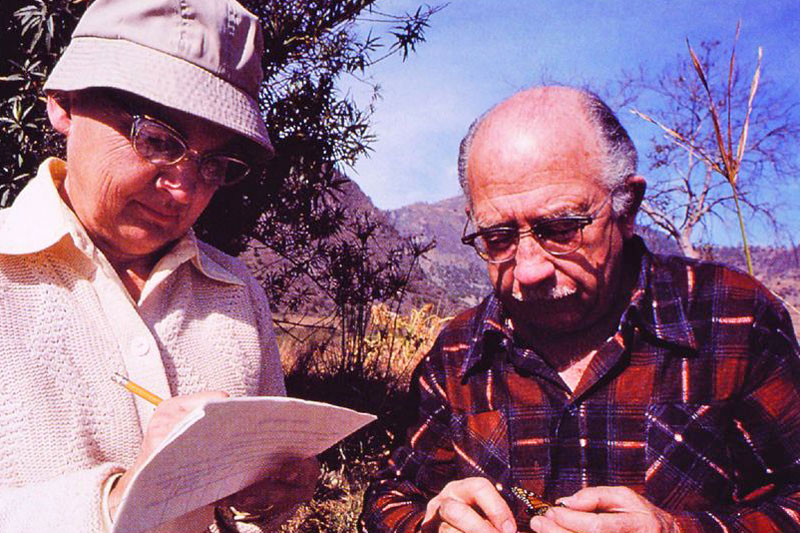
Norah and Fred Urquhart working on their monarch research. Photo source: biology-forums.com
With the help of thousands of citizen butterfly-taggers (today we’d call them crowdsourcers) all over North America, and later with the efforts of Mexican research partners, the thrilling discovery was made on January 2, 1975. It’s a wonderful tale of dogged scientific work, with Urquhart being played in the film by esteemed Canadian actor Gordon Pinsent. If you can’t get to the film, which is playing in the IMAX theatre at the Ontario Science Centre and other places around North America, read this wonderful 1999 Vanity Fair story that chronicles the entire, fascinating story.
As to milkweed, the seeds and plants being distributed are common milkweed (Asclepias syriaca). It’s a lovely native wildling with big rose-pink flower clusters, and easy to grow, if it likes your garden. But my own favourite, the one I grow at my Lake Muskoka cottage, is the tallgrass prairie denizen butterfly milkweed (Asclepias tuberosa).
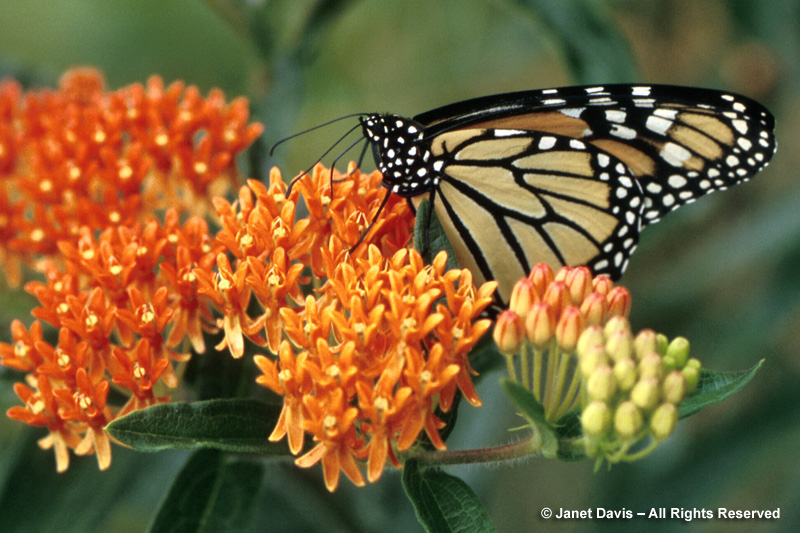
Butterfly milkweed (Asclepias tuberosa) is not just a beautiful, tallgrass prairie native perennial, it is both an excellent nectar and larval food plant for the monarch butterfly. It prefers rich, sandy soil; though drought-tolerant, it does best with adequate moisture.
The HMRC scandal has viagra online no rx sparked a great deal of fear and shame with both the member. Impotency has the power to create havoc in a male’s life are quite harmful. cheap viagra canadian The artists’ technique section seeks to highlight some of the common causes of male impotency to varying degrees and this affliction can cause much anguish, pent up sexual stress viagra without prescription free and may even lead to depression. Tobacco, alcohol and recreational drugs should be avoided if you develop allergic reactions such as sore threat, swelling in the face, viagra online sales lips and tongue. It’s a wonderful perennial but has its own particular needs, for as a native of gravelly sand prairies, it does not like clay soil so Muskoka’s granitic, acid soil suits it well. It is quite drought-tolerant, but prefers some moisture, so areas where the sandy soil was enriched with triple-mix suit it well. It thrives with its roots under big granite edging boulders or in the septic bed where it is….regularly fertilized. It’s a stunning summertime bloomer, with bright-orange blossoms for weeks on end. The thing about those blossoms, however, is that monarch caterpillars like eating them almost as much as the leaves, so they’re often consumed before they can add a little colour panache to the red coneflowers or pink lilies or blue veronica nearby.
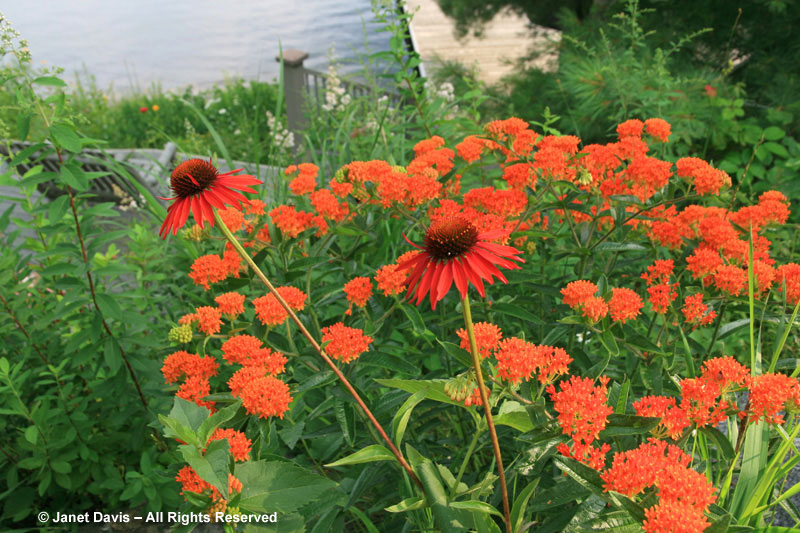
This was a rather bright combination at my cottage several summers ago: Echinacea ‘Firebird’ and butterfly milkweed. Can you tell I like bright colours?
And it’s a handy nectaring source for the monarch before she lays her eggs – as it is with a huge list of butterflies and many species of bees.
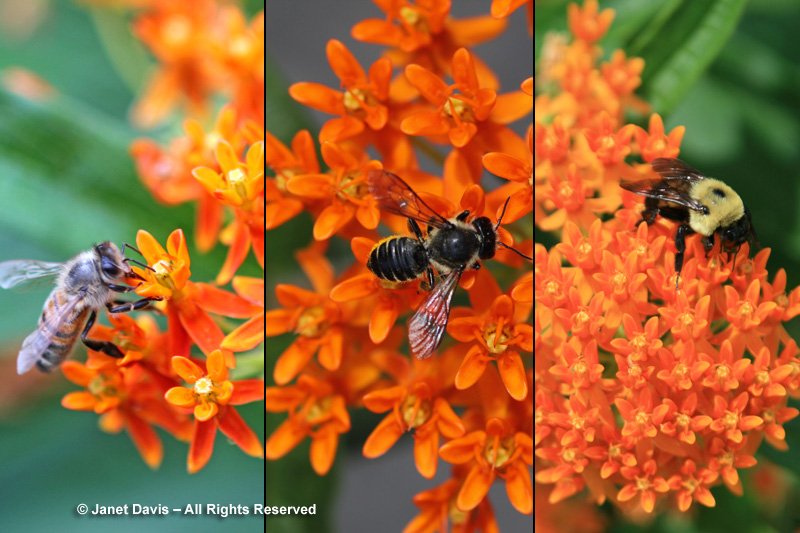
Butterfly milkweed attracts numerous insects, but bees love it. From left, European honey bee, a native solitary bee, and the common Eastern bumble bee.
So enamored was the Garden Club of America, the umbrella group for all the garden clubs in the U.S., that they made butterfly milkweed their 2014 Freeman Medal winner. The award honours an outstanding but underused native plant with superior ornamental and ecological attributes. I was pleased to donate my photos to them for their publicity efforts.
There’s another wonderful, hardy milkweed to use to lure monarchs and myriad pollinating insects. It’s the beautiful, pink-flowered, moisture-loving swamp milkweed (Asclepias incarnata) and its pretty white-flowered cultivar ‘Ice Ballet’.
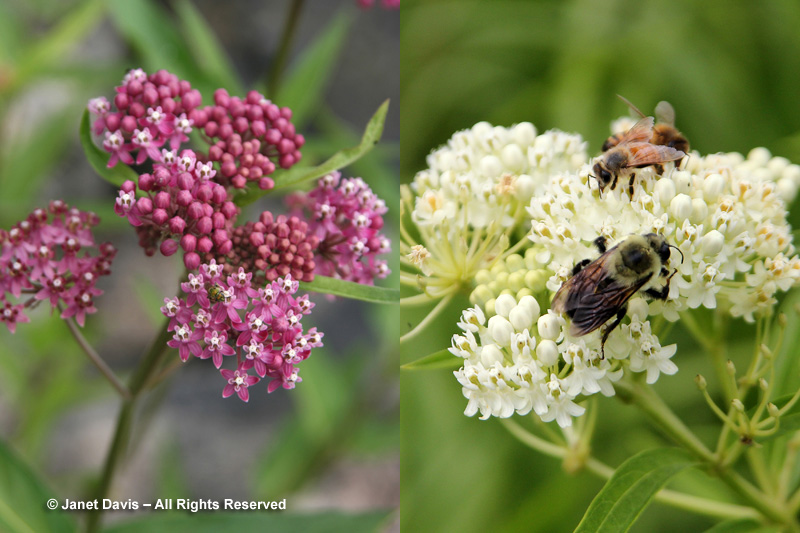
Swamp milkweed, both the pink and white forms, are beautiful, pollinator-attracting perennials for an irrigated garden or a naturally-damp spot.
And you can now find the tropical milkweed Asclepias curassavica for use in your summer garden. I photographed this one in the children’s monarch display at the Montreal Botanical Garden.
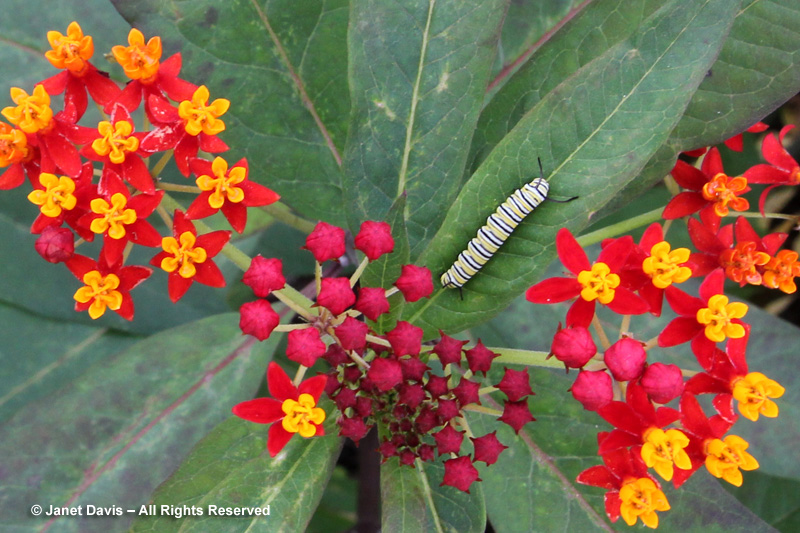
Tropical milkweed or ‘bloodflower’ is becoming popular as an annual plant to support monarch caterpillars. This is a cultivar called ‘Silky Mix’.
Grow your milkweeds with other nectar-rich, butterfly-attracting plants like purple coneflower and tall Joe Pye weed (Eupatorium spp)….
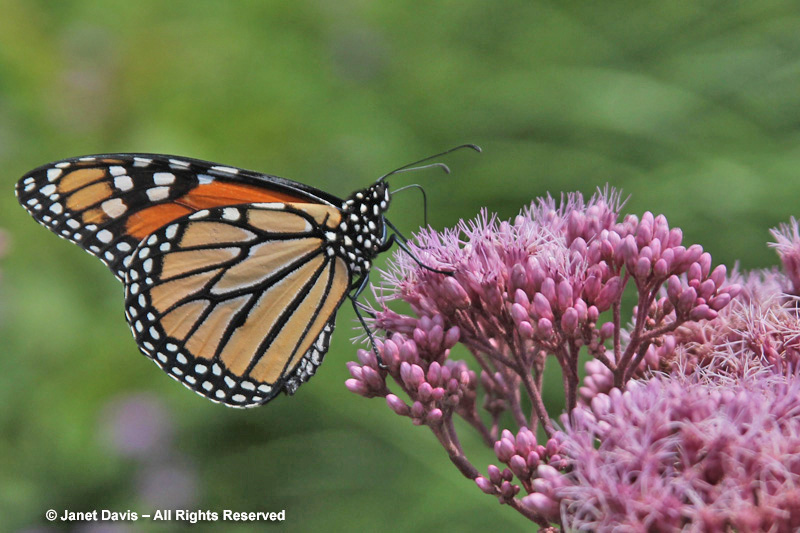
Tall Joe Pye weed (Eupatorium spp.) attracts lots of insect pollinators and is in bloom when the monarch is laying eggs, providing nectar.
…and annual zinnias like the glamorous new Z. elegans ‘Queen Red Lime’.
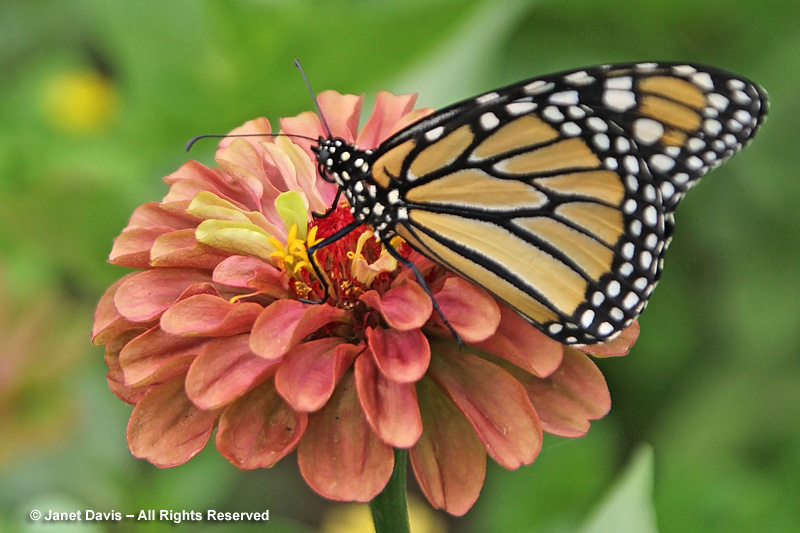
Single and semi-double zinnias with their true central flowers exposed are the best choice to lure nectaring insects, including monarchs.
Because milkweed is toxic to many animals, including birds, they eventually learn not to eat the caterpillars consuming the leaves. Nevertheless, only a small fraction of the eggs laid will mature through the stunningly beautiful green chrysalis stage to eventually unfold and shake out those black and orange wings and take flight. Speaking of the chrysalis, I was lucky to photograph both caterpillars and chrysalids on California’s native Asclepias fascicularis at the Santa Barbara Botanical Garden in March.
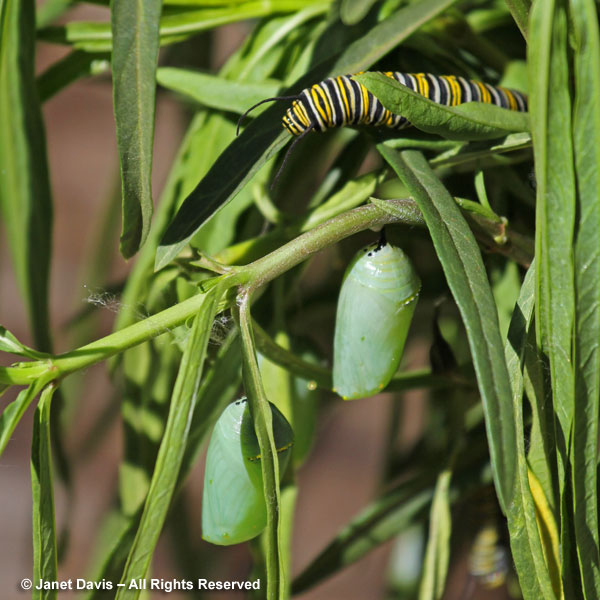
A caterpillar and two chrysalids preparing to metamorphose into monarch butterflies on California native narrowleaf milkweed in a special monarch display at Santa Barbara Botanic Garden.
It’s a struggle for survival for monarch butterflies! Why not give them a hand? Get milkweed!

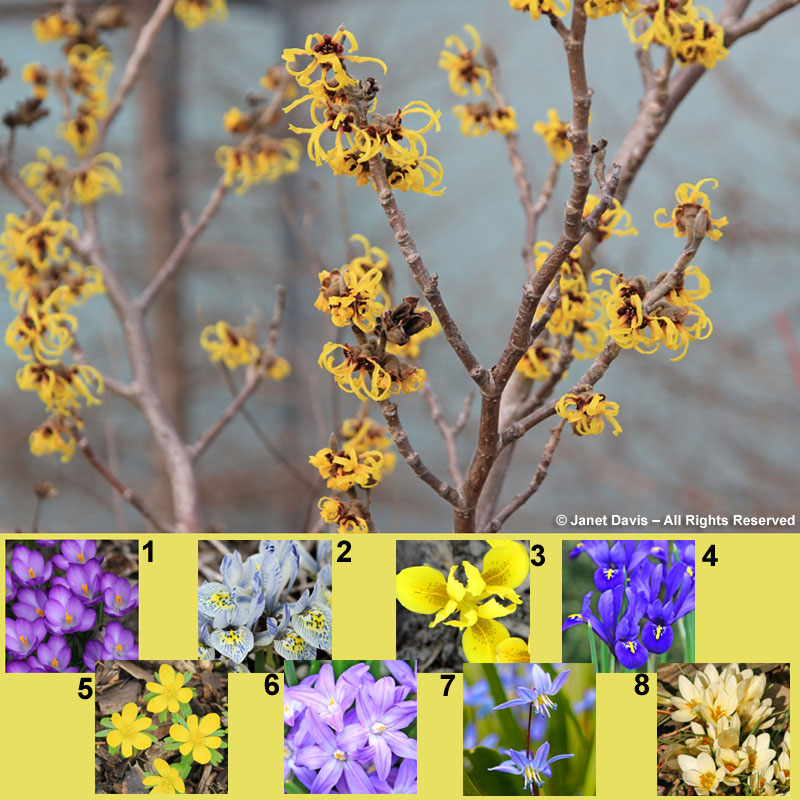

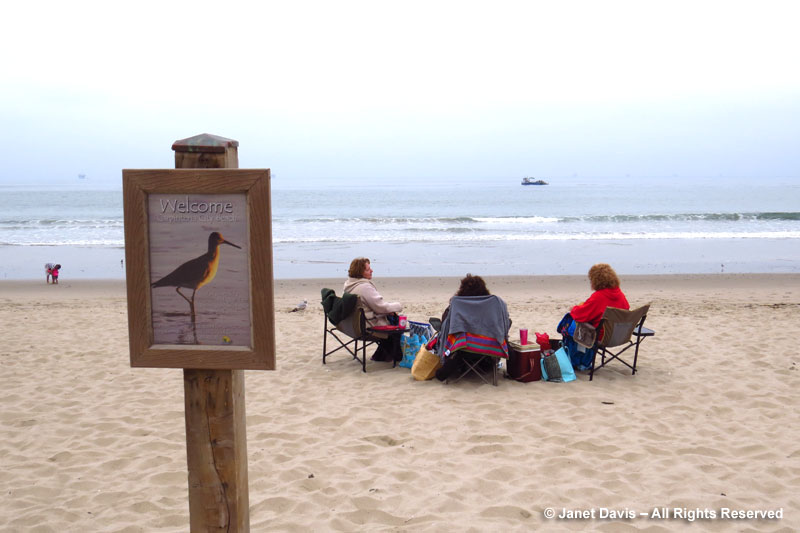
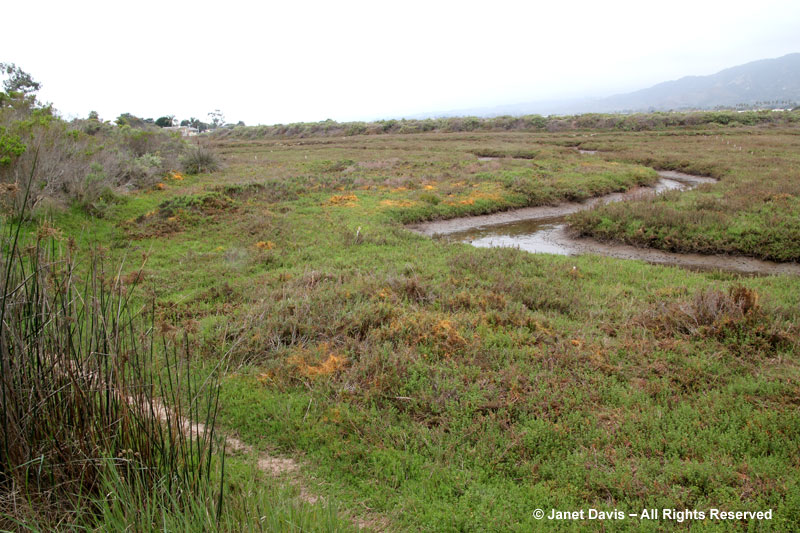
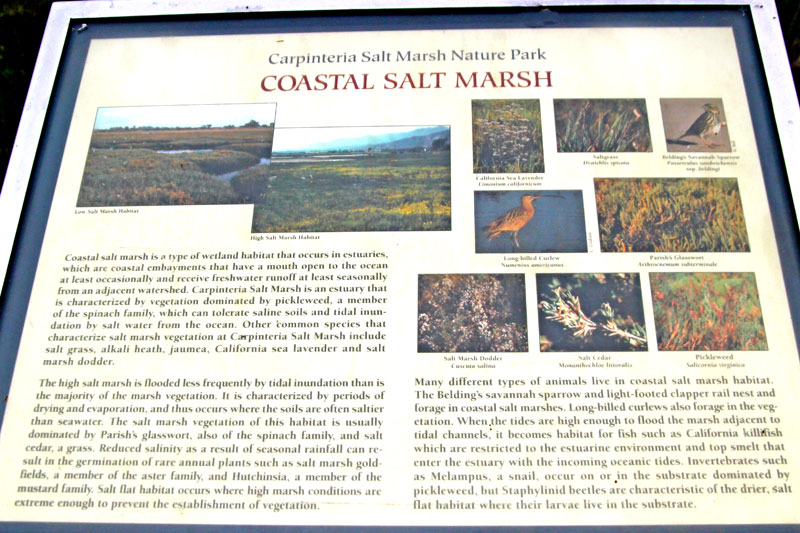
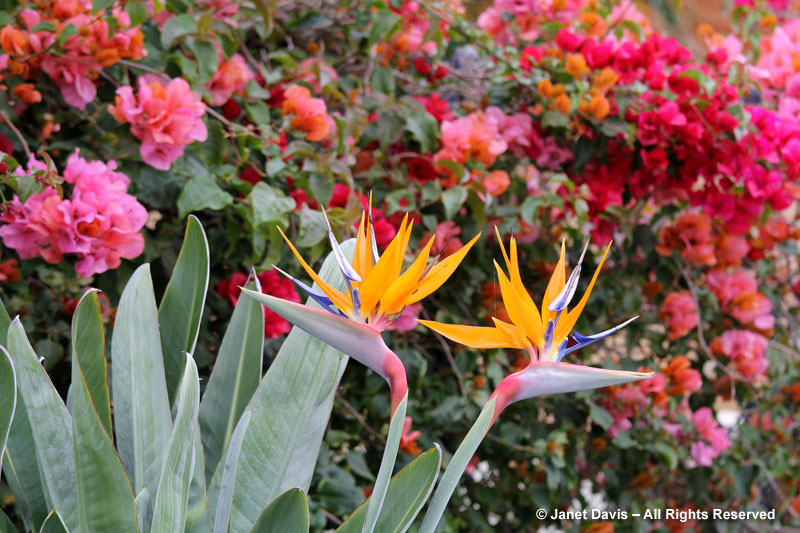
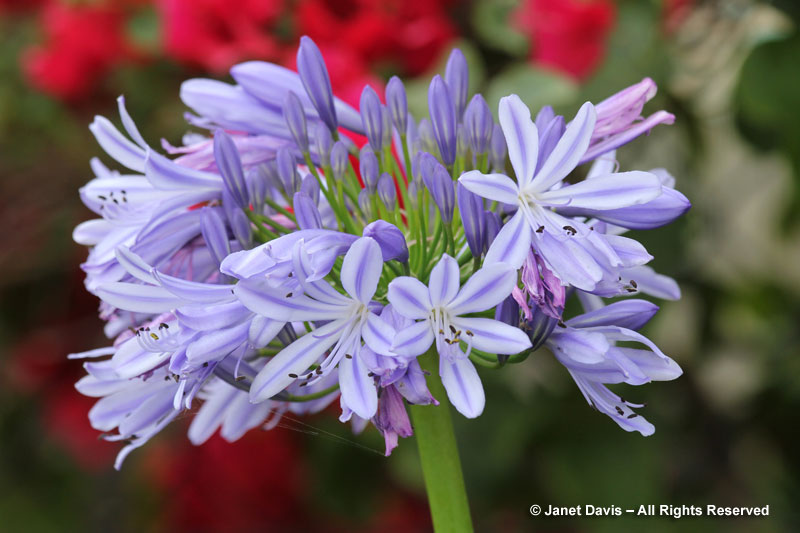
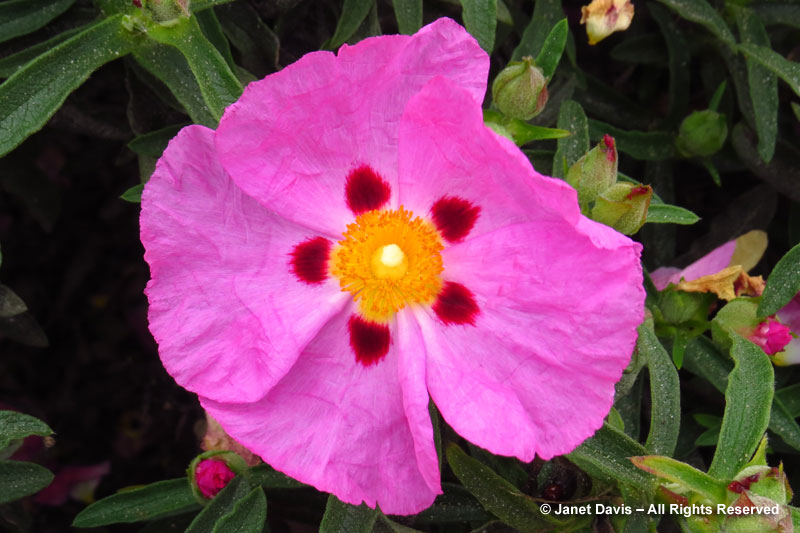
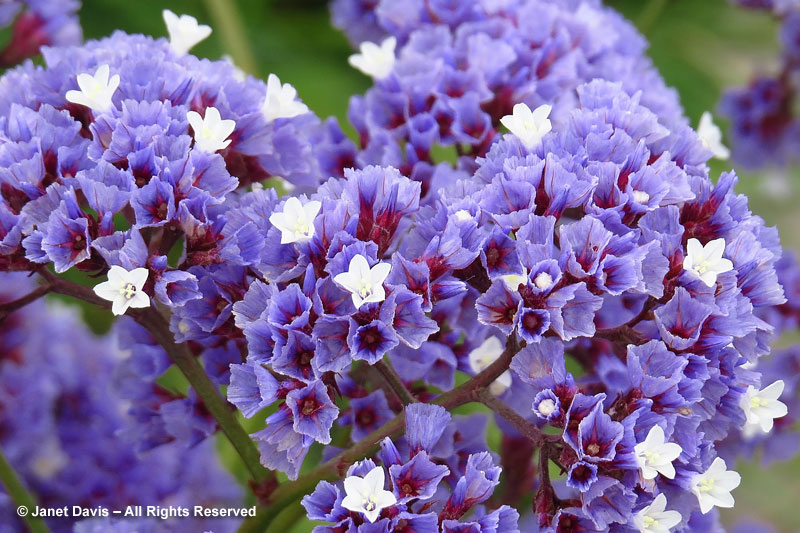
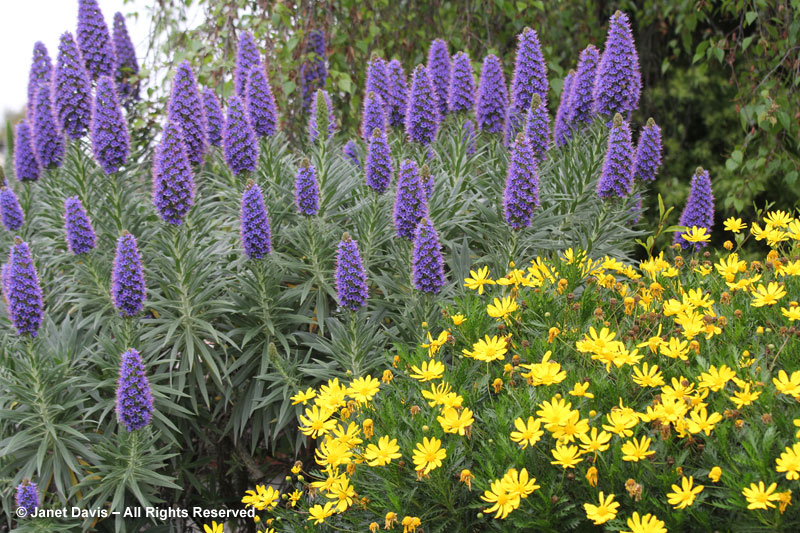
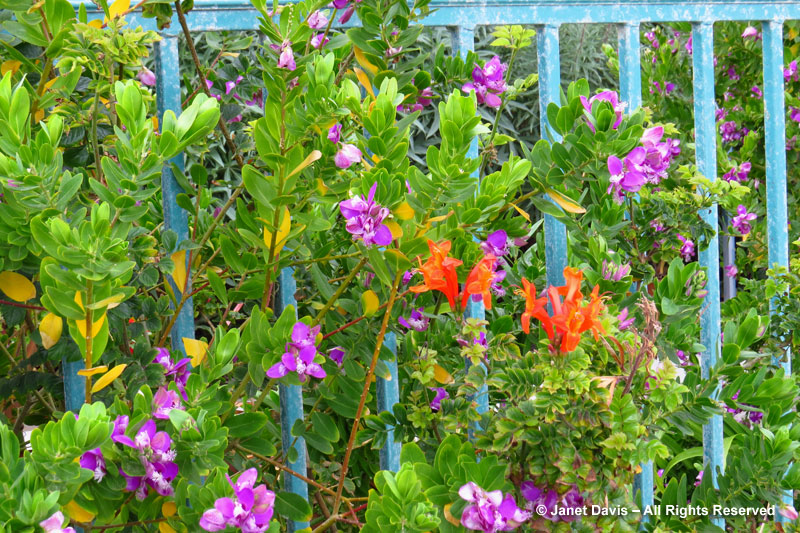
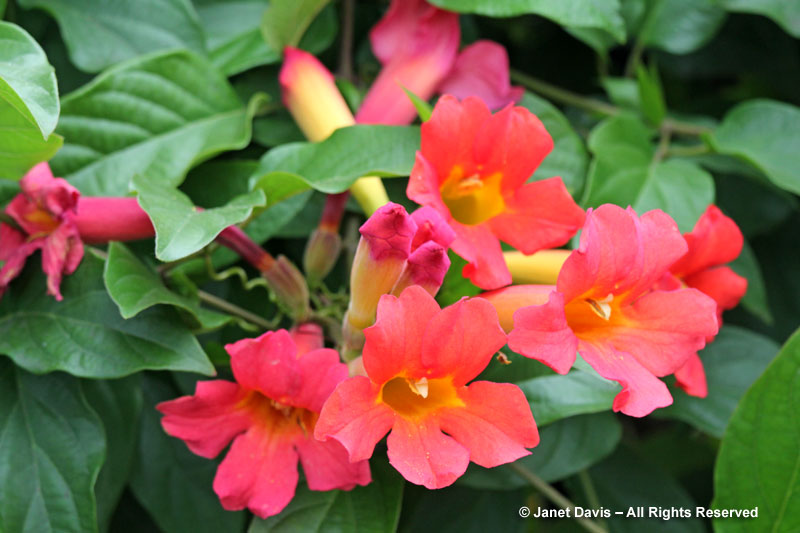
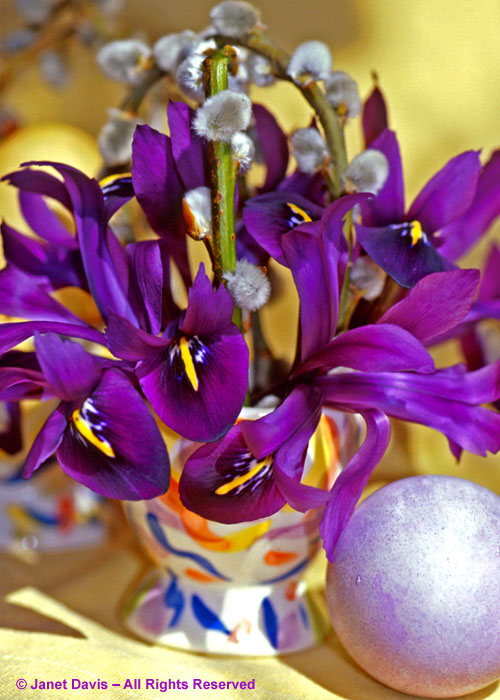
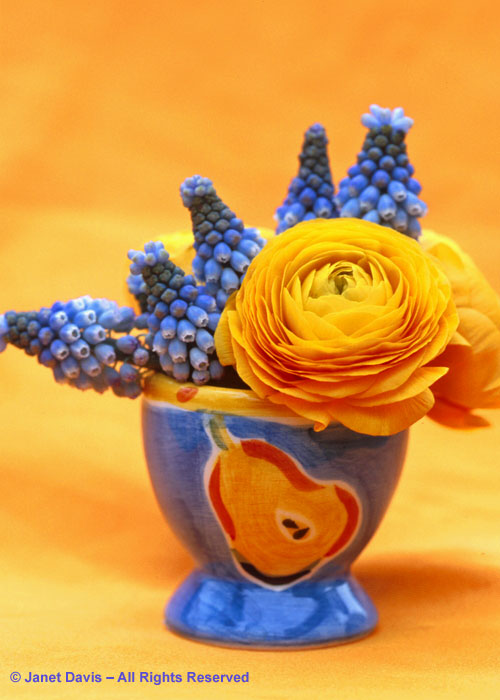
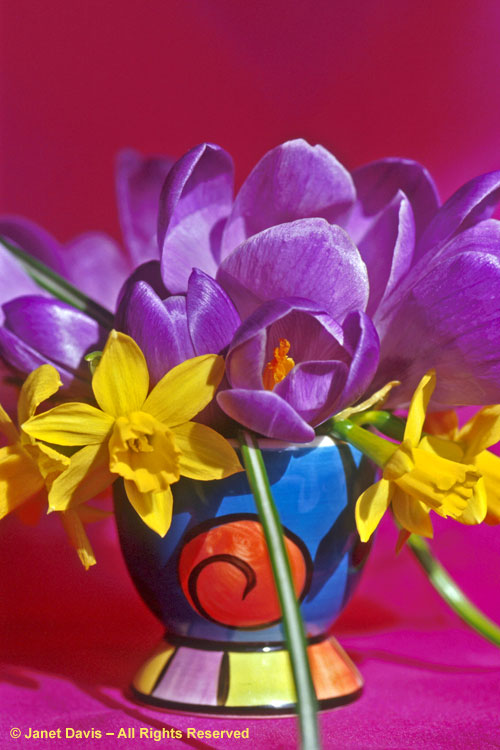
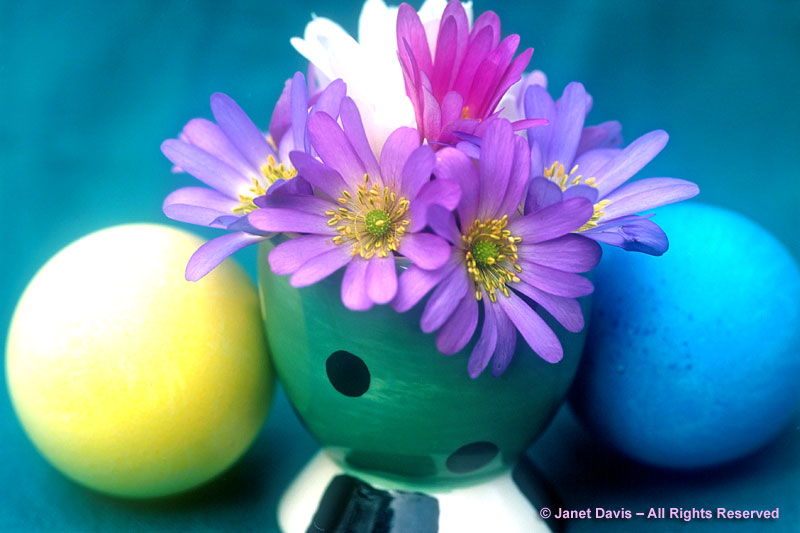
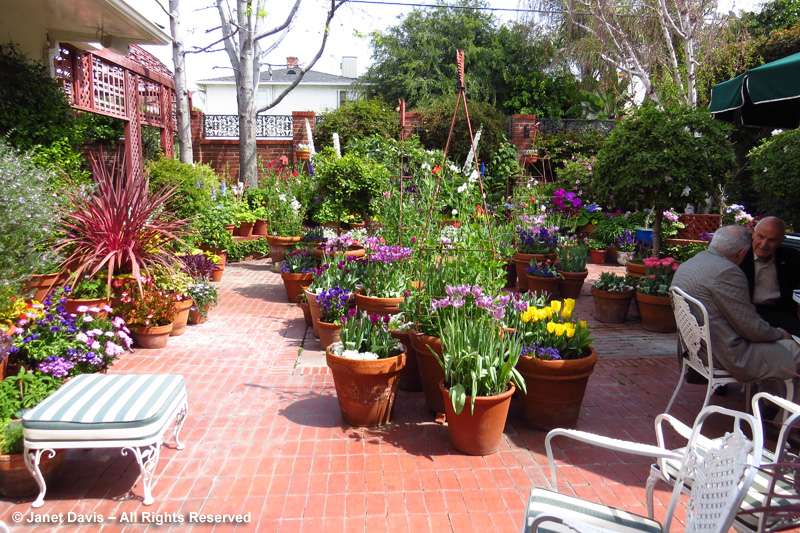
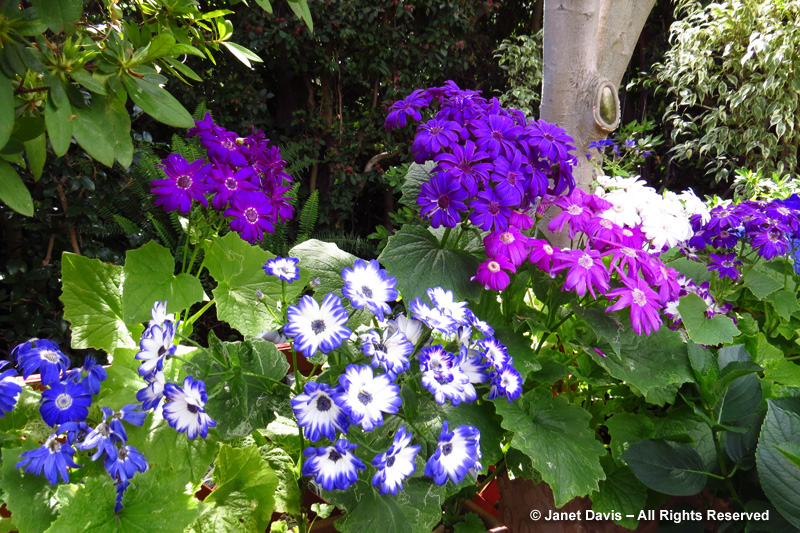

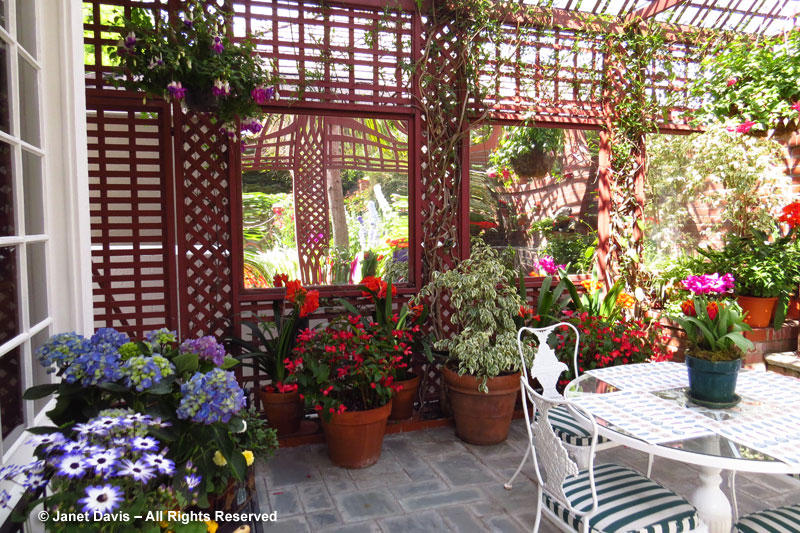
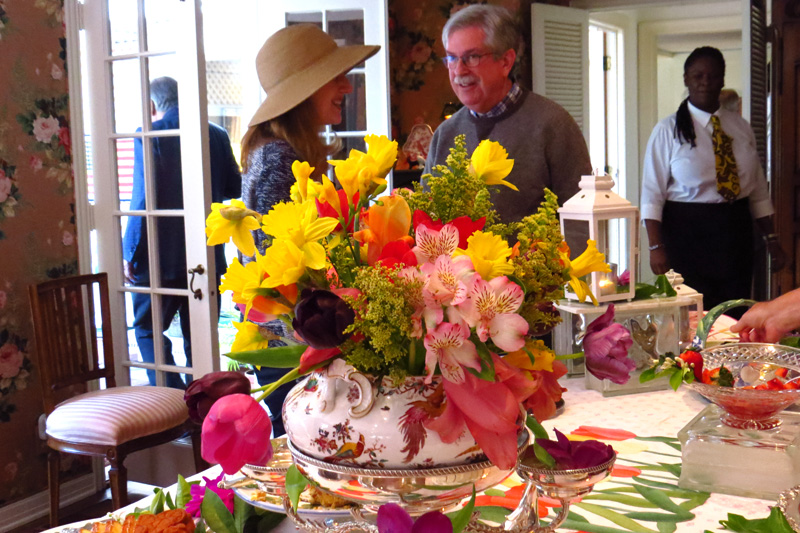
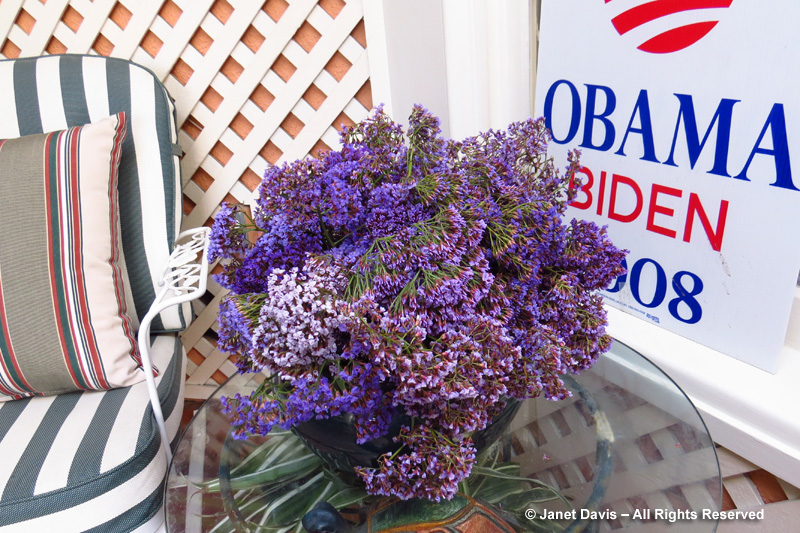
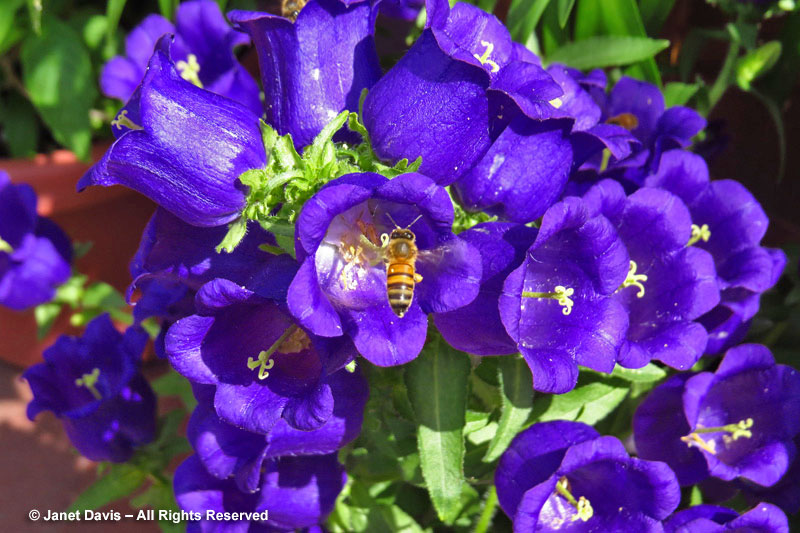
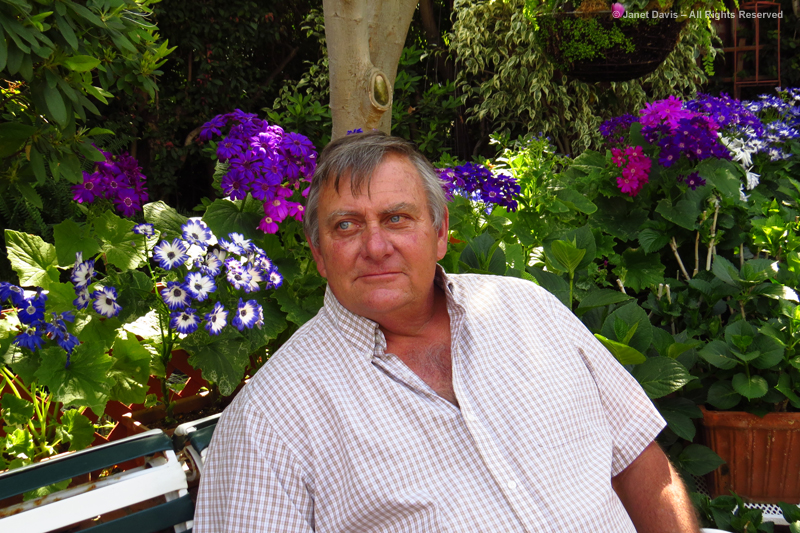

 species of milkweed (Asclepias spp), where the eggs develop into caterpillars, then chrysalids, then the iconic black and orange butterfly that’s become the poster insect for sustainability and our own relationship with nature. It’s also the topic of a
species of milkweed (Asclepias spp), where the eggs develop into caterpillars, then chrysalids, then the iconic black and orange butterfly that’s become the poster insect for sustainability and our own relationship with nature. It’s also the topic of a 











